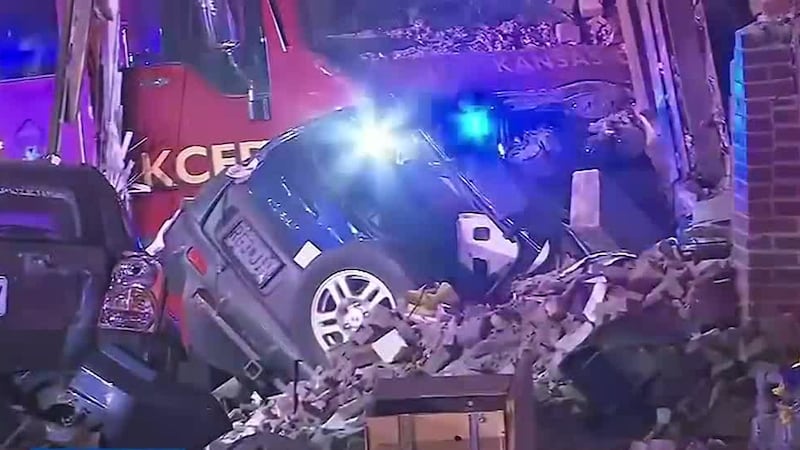Kansas bill aims to redefine child porn law to include AI
KANSAS CITY, Mo. (KCTV) - Protecting your children is getting more difficult with the emergence of AI.
Normally, you’d have regular chats with your kids, and they’d tell you if something is wrong. But now it can happen without them even knowing.
Proof that it is happening comes from a recent development in Mississippi this week. Criminal charges allege a teacher used social media photos to make AI-generated video showing eight teenaged students of his engaged in sexually exploitative conduct. The charges indicate he got the photos off of Facebook.
The criminal codes in most states have not yet caught up to what advancements in technology can do to sexually exploit children and adults.
Kansas State Rep. Brad Barrett, a Republican from Osage City, introduced House Bill 2183 after learning about what’s happening at conferences he attends in his other job role as special investigator for the Shawnee County district attorney.
“I help with human trafficking and child exploitation crimes,” Barrett said. “This material, as the federal agents describe, that I spoke with, is just horrific and obscene. It’s unimaginable, because they can use this material to create just the worst case scenario.
He took an even deeper look when he got a phone call from a detective at an agency in his district who was investigating such a crime using an identified child’s face morphed into existing child pornography. Barrett wouldn’t get into detail because the case hasn’t been charged yet, but he said the suspect was already a registered sex offender.
“The main goal of having this bill go into effect is that the law is holding those offenders accountable and protecting our children,” Barrett said.
House Bill 2183 would expand on what is considered child pornography to include visual content that’s digitally altered to look like a specific child as well as content made entirely by AI to represent no specific child in particular.
OPPOSITION TO THE BILL
The bill sailed through the house by a vote of 119-to-3. Every Kansas City area lawmaker on both sides of the aisle voted yes. Among them is Kansas State Rep. Dan Osman, a Democrat from Overland Park.
He described how fully-computer-generated child porn is created. It’s generated from something. Even if it’s an amalgamation, it begins with previous images or videos of child porn. There is no victimless version.
“They would either get it from actual child porn, which is horrific, or they would get it from photos of innocent children, who had no knowledge that their pictures are going to be morphed into child pornography, which is its own set of horrific-ness,” he said. “Neither of those situations are okay for the children involved.”
Osman is the ranking member on the House Judiciary Committee, where the bill originated. He considers himself a staunch defender of free speech and as the ranking member took careful consideration of the testimony by the opposition.
That came from Kansas BIDS, the state’s public defender board. They argued that fully-generative AI child porn would be protected as free speech protected by the First Amendment because it could fall under the category of art. The thought no doubt sounds disgusting to most people, but Osman, a lawyer, said it is a legally valid argument in many cases.
It is not in this case, he said, because of how AI generates images.
“It doesn’t generate it from the same creative sources that your brain would create it,” he said. “It comes from a learning model.”
The bill passed out of the Senate Judiciary Committee last week and is awaiting a date to be heard by the full senate. Should it pass, it will go into effect immediately after being signed by the governor.
“Hopefully this bill, when it goes into law, will significantly curtail the issue and give law enforcement the means to actually fight this epidemic,” Osman said.
WHAT ELSE IS IN HB 2183?
The bill expands the definition of several sex crimes.
Sexual Exploitation of a Child
This is the crime that includes what would commonly be described as child pornography.
The definition expands to include any “artificially generated visual depiction” that is sexually explicit, obscene and meant to arouse. It includes “depictions indistinguishable from a real child, morphed from a real child’s image, or generated without any actual child involvement.”
Unlawful Transmission of a Visual Depiction of a Child
This crime refers to transmitting a nude visual of someone between 14 and 17 years old by someone who is 18 or younger. Commonly, it could be thought of as revenge porn among high schoolers.
That definition would expand to include nude images of an identifiable child, “regardless of whether such identifiable child was involved in the creation of the original image.”
Breach of Privacy
Think of this as revenge porn with only adults involved. That crime would be expanded as well to include content that is digitally altered to appear to be an identifiable person.
Copyright 2025 KCTV. All rights reserved.












